Blog Log 27 Dec 2008
 December 30, 2008
December 30, 2008
The last dive of the year! We were all set for a good one but the weather was testing all of us. Despite the week-long monsoon rains (which have arrived late and scattered this year) the sun shone intensely this Saturday afternoon. Almost as if to mock us, the water was frigidly cold and divers donned their hoods and hotskins under their wetsuits (though some chose to fight the cold in their boardshorts). “Hydriods!” some of the divers warned… Because it was a boat full of Divemaster Trainees and Hantu first-timers! We were in for a treat, and I was stressed out about the underwater conditions, hoping that these introductory divers would have a fun, encouraging, and eventful dive.
As with all weekends during the monsoon season, Hantu gets a little bit more crowded. Those who missed the opportunity to dive during the dive season chug down to Hantu for a quick fix. Two other dive boats were at the site when we arrived, lots of divers in the murky depths, and lots of silt stirred up. “The silt takes a long time to settle.” I informed the divers in an attempt to defend the waters and the reef. The truth is, with an assortment of activity that goes on around the island, it’s very hard to pinpoint what exactly is the cause of the turbid waters at any one point in time.
“Argh! Jellyfish!” Ming Sheng, one of the reef guides who’s returning from a hiatus in Borneo exclaims, “They’re back!” Well, there were a few floating around, but not as many as several months back. Despite the pain they threaten, jellyfish beautiful and transfixing animals to observe. We’re lucky the ones that are commonly found around here aren’t too venomous. No one got stung by any jellyfish, though some did bear the scorn of hydriods.
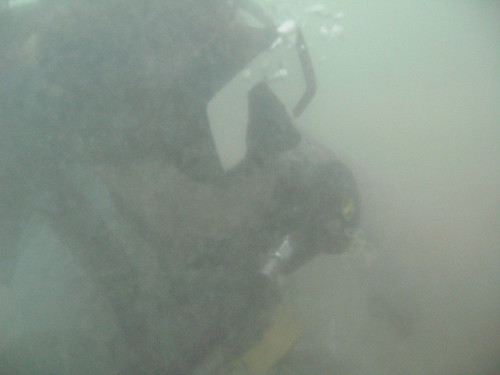
First-time Hantu diver, Allan, peers through the murky water. Allan and I spotted an octopus on our first dive.
Today Hantu lived up to it’s infamous reputation. But some were still disappointed because they wanted to experience extreme low visibility conditions (read: “I couldn’t see my own hand!”) but as this picture is proof, you could well see beyond your own hand. Diving in Hantu has not been about appreciating underwater vistas. It’s always been about the critters and the exploration. The peering into crevices and dark holes with a torch to see what you might stirr up! Hantu is also good for appreciating the reef and coral, which is often over looked when they occur in huge expanses. It forces the diver to slow down and investigate. And it’s almost always rewarding to the diver who manages to literally, look past the silt.
Some of our divers were also armed with cameras and probably encountered a kind of self discovery when pushed to photograph in Hantu’s dark and turbid waters! With the amount of slit floating about, the camera’s auto focus sometimes focused on the drifting particles instead! It was hilarious.
One of the reasons I’m talking about the silt is because people seem to love to ask about it. And through the years of talking to divers, initially trying to avoid the topic all together, I’ve realised there’s really no harm in discussing it. Perhaps it’s even necessary to reiterate the fact the waters around Hantu are usually low visibility (though they can clear up to 6m during certain seasons). The Hantu Blog has come to embrace the reputation of Hantu’s “muck diving” because we still manage a good time regardless, and those who keep their eyes open still manage to learn something everytime, and it’s not about silt. We already knew about that.
Records of new animals continue to pop around at Hantu and it’s surrounding waters, and that has inspired many divers and researchers to continue to trawl Hantu’s tiny reefs in search of a well hidden discovery.
It was very exciting to learn that the above sponge was one of 40 new records of sponges in Singapore. We’ve observed this sponge for several years during our dives and it’s fortunately, relatively common on our reefs. However, the first time it seems to be photographed is in 2004 when I took a picture of my first encounter with a seahorse! The seahorse had it’s tail coiled around the “stem” of the sponge sans the fan-like protuberance.
“How did you spot this coral? It looks just like the rest!” Questioned one of the divers when I emerged with this picture. Several years back I attended the 13th Conference of Parties to the CITES as a member of the press. It was at that CoP that the Black Coral and inanimate marine objects/substrates such as unique rocks and sand gained protection under the CITES. It was an unprecedented and important event for regulating the trade and exploitation of marinelife. Almost everytime I spot this very special coral on a dive, I cannot resist taking a photograph of it because it represents the hope of a future for all marine life.

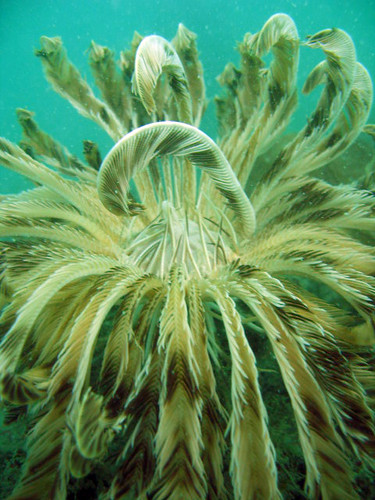

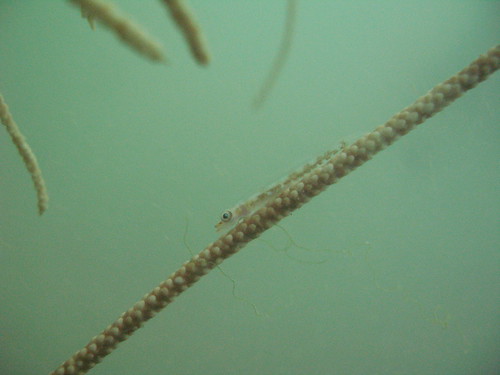
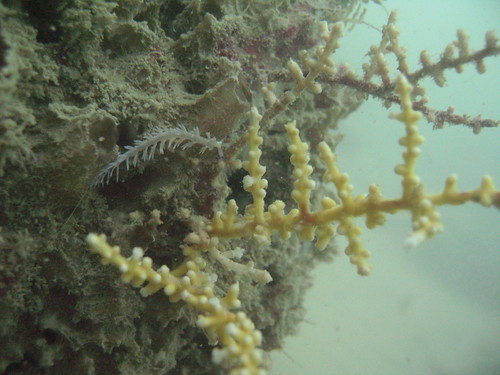
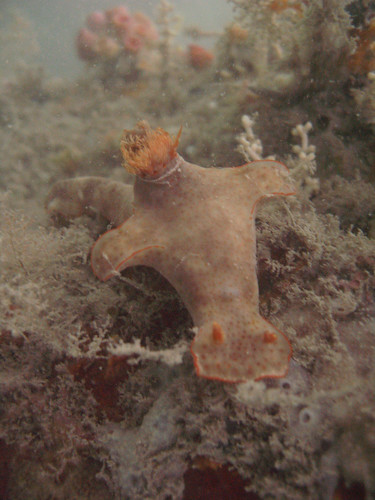
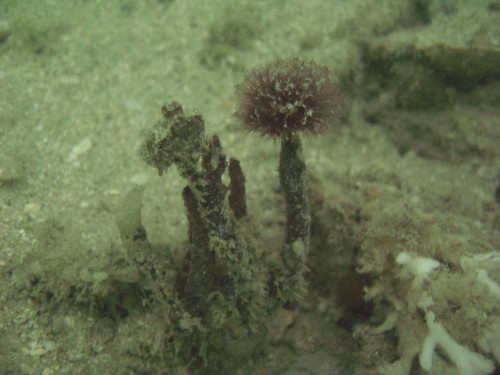
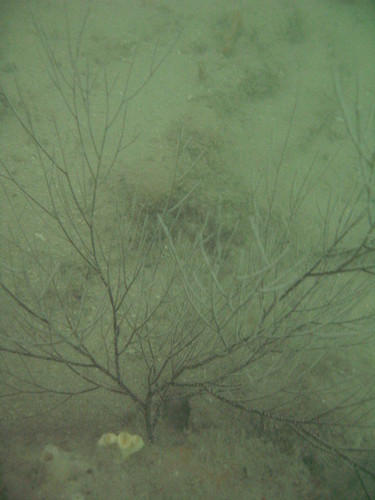
 Posted in
Posted in 



 content rss
content rss
COMMENTS